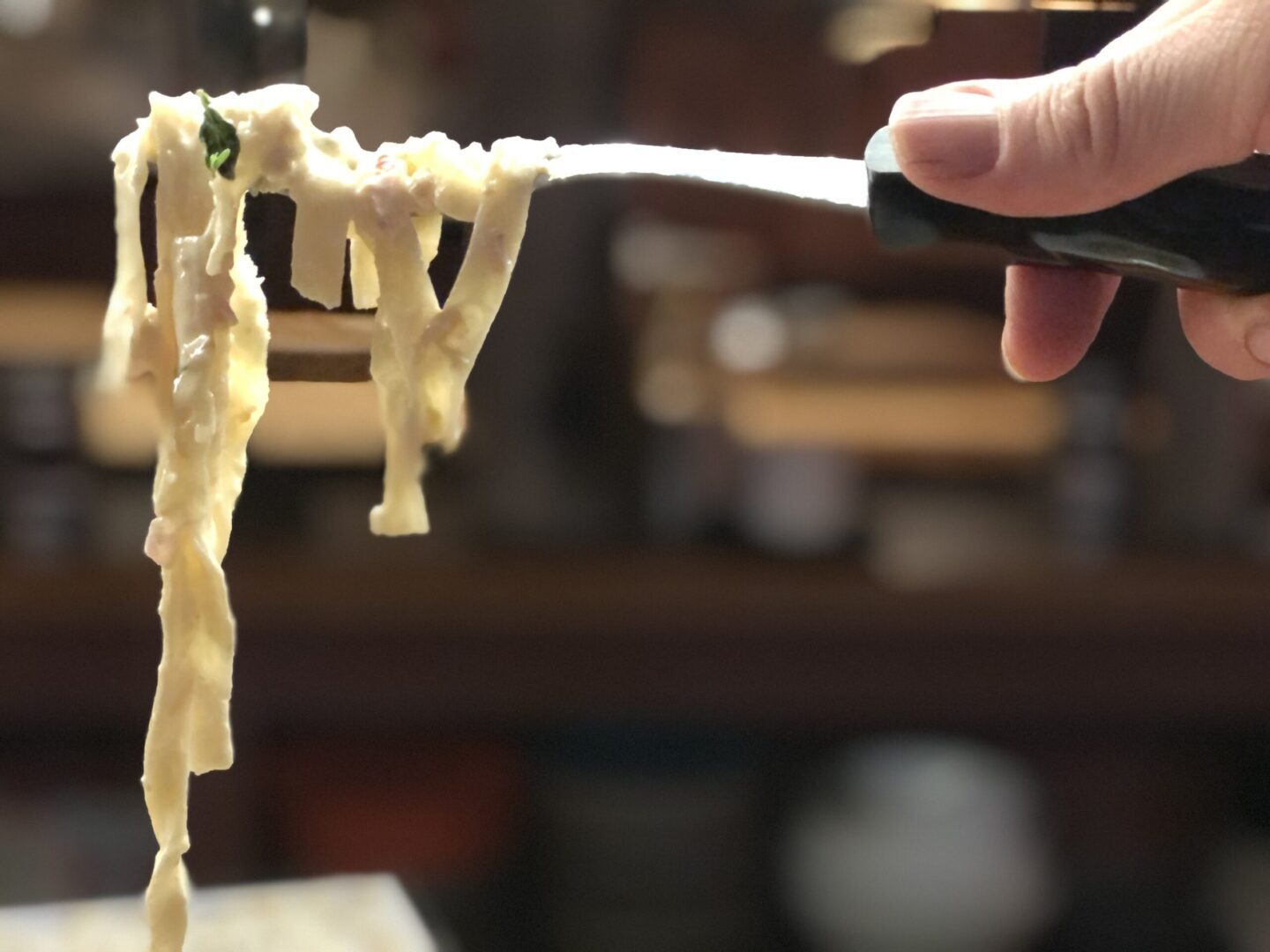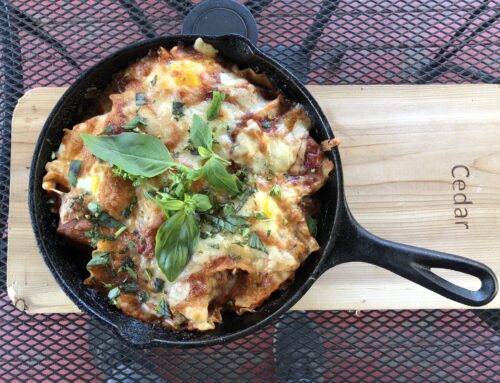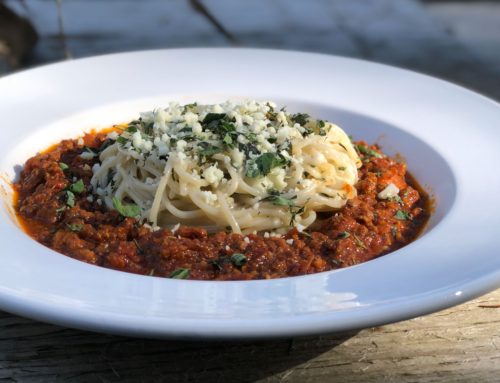Fettuccine Alfredo Styles and History
I am an Executive Chef, Owner and Artist of a restaurant called Rifugio’s Country Italian Cuisine. I love history and mysteries. So when something appears to be conflicting in what I think and what other people think is suppose to be or not to be than its my task to get to the bottom of it. It may or may not alter how I perform a recipe but it will allow me to present what I may call one thing and what others call something else.
You may ask what am I talking about? I am talking about Fettuccine Alfredo. About 90-95% of our customers say our Fettuccine Alfredo is the best they have ever had. The remaining have very strong reactions to what I put into it and ask me to alter it and assume that it did not have that in it and that most Alfredo sauces do not have those ingredients in the sauces they get. I now know what separates me from the rest. Drum Roll, please… RED ONION and CAPERS.
Let us start with the History
Serving fettuccine with butter and cheese was first mentioned in a 15th-century recipe for maccaroni romaneschi (‘Roman pasta’) by Martino da Como, a northern Italian cook active in Rome; the recipe cooks the pasta in broth or water and adds butter, “good cheese” (the variety is not specified) and “sweet spices”.
Modern fettuccine Alfredo was invented by Alfredo di Lelio in Rome. According to family accounts, in 1892 Alfredo di Lelio began to work in a restaurant that was located in piazza Rosa and run by his mother Angelina. Di Lelio invented “fettuccine al triplo burro” (later named “fettuccine all’Alfredo” or “fettuccine Alfredo”) in 1907 or 1908 in an effort to entice his wife, Ines, to eat after giving birth to their first child Armando. Alfredo added extra butter or “triplo burro” to the fettuccine when mixing it together for her. Piazza Rosa disappeared in 1910 following the construction of the Galleria Colonna/Sordi, and the restaurant was forced to close. Di Lelio later opened his own restaurant, Alfredo alla Scrofa, then called “Alfredo”, in 1914 on the via della Scrofa in central Rome.
The fame of Alfredo’s fettuccine spread, first in Rome and then to other countries. Di Lelio was made a Cavaliere dell’Ordine della Corona d’Italia.
In 1943, during the war, di Lelio sold the restaurant to two of his waiters. In 1950, with his son Armando, Alfredo di Lelio opened a new restaurant in piazza Augusto Imperatore, Alfredo all’Augusteo, now managed by his niece Ines Di Lelio, bringing along the famous “gold cutlery” said to have been donated in 1927 by the American actors Mary Pickford and Douglas Fairbanks in gratitude for Alfredo’s hospitality. The two restaurants competed vigorously, with escalating puffery: “the king of fettuccine”, “the real king of fettuccine”, “the magician of fettuccine”, “the emperor of fettuccine”, “the real Alfredo”, etc.
So! you can now see some or many of the issues I am dealing with. Not only is my version not the original neither is anyone else. To be fair the American version with just heavy cream and cheese is closer to, the Italian version of butter, broth and cheese
Rifugio Style Alfredo with Fettuccine pasta
Red Onions sliced into half moons – saute with olive oil use pumice olive oil as it is better to cook with as it take higher temperatures.
Capers – add these next. Careful as they will create a flare up of fire as you through them in.
Crushed Garlic – then add white wine to add acidity and de glaze the pan
Heavy Cream – reduce the heavy cream for about 2 minutes
Parmesan cheese – add the parmesan cheese make sure its shredded and emulsified into the heavy cream. Add starchy water to thin it out if it is too heavy. I dislike gloppy sticky alfredo sauce. The texture is horrible. It should be fluid and smooth.
In summation – I find that I have not need to change the way I make Alfredo sauce as the capers add brininess and the red onions a sweetness with bright notes. The only thing I may change would be the way the onions are cut and make them into a dice so they are more incorporated into the sauce and not as stringy.





